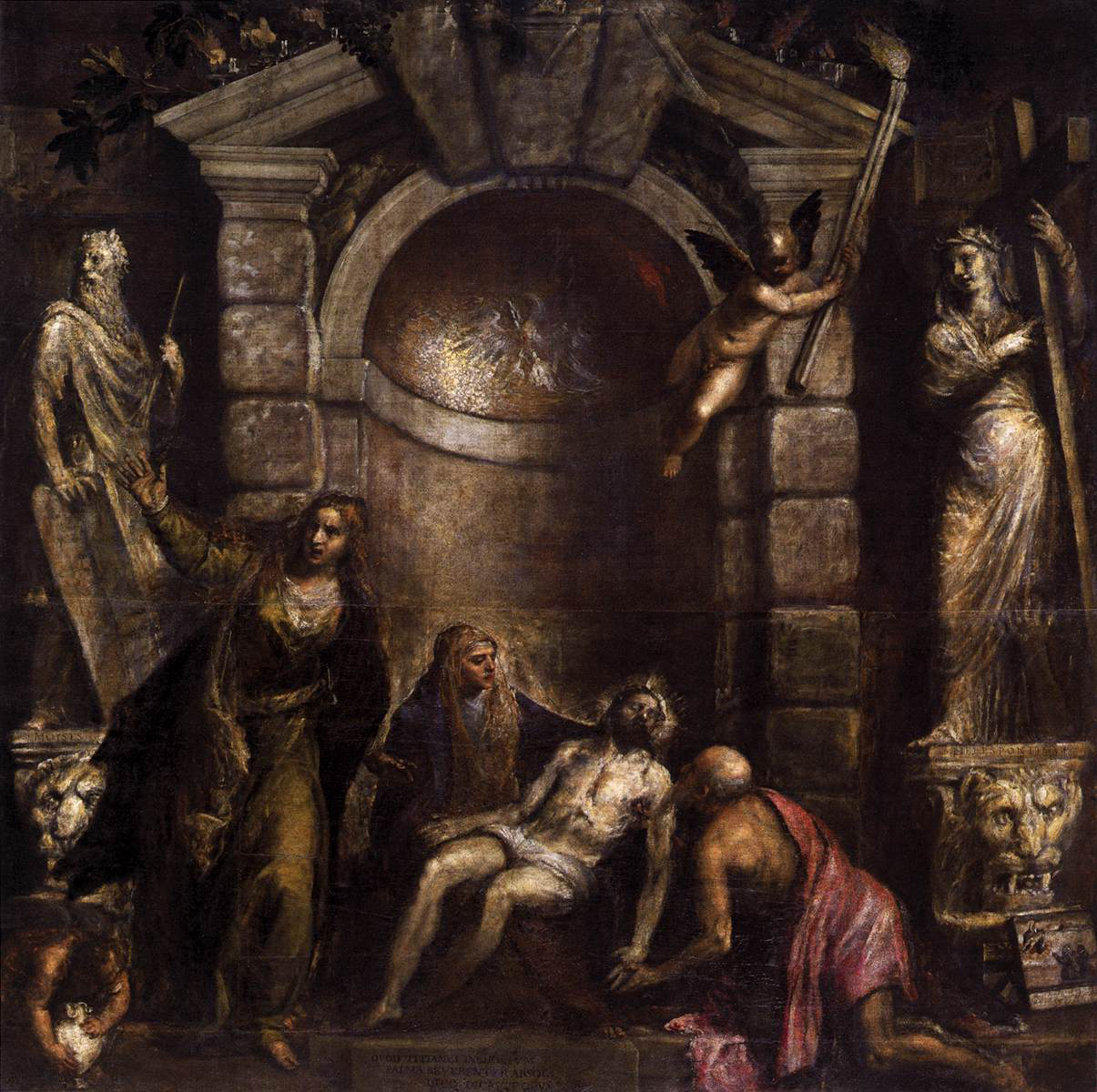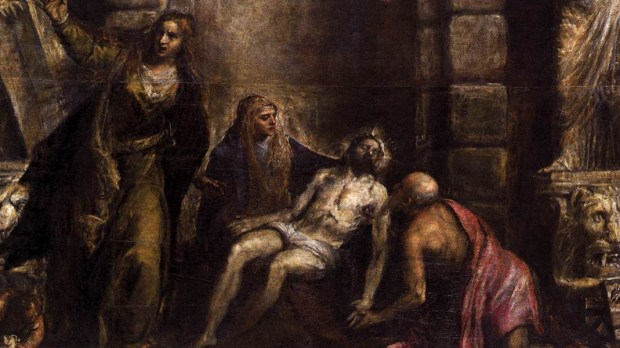It can be hard to find hope during what experts predict to be the peak weeks of the coronavirus epidemic in the USA. But some of the greatest Renaissance and Baroque artists, who lived through plague outbreaks, certainly did find hope during dark times and left behind some of the most moving works of art of Western history in the process. Here are some masterpieces inspired by artists dealing with plague outbreaks.
Antonio Zanchi, The Virgin Appears to the Plague Victims (1666)
Located on the staircase of the Scuola Grande di San Rocco, a lay confraternity founded in 1478 in honor of plague protector St. Rocco, this majestic painting by Baroque painter Antonio Zanchi displays the miraculous appearance of the Virgin to the people affected by the 1630 plague in Venice. Composed of two canvases divided by a pillar, this work is characterized by an incredible sense of movement of the bodies of human subjects. Dramatic use of colors further adds to the intensity of the picture, which reminds us of the benevolence of the Virgin to the plague ridden.
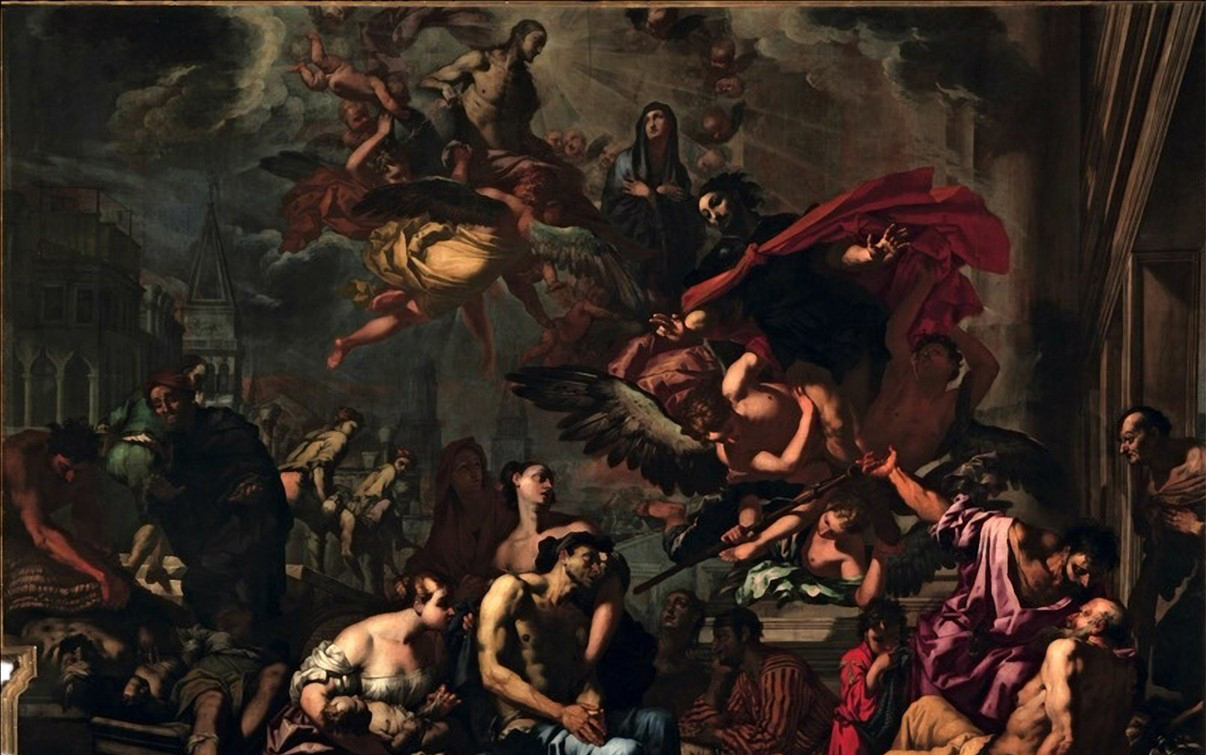
Caravaggio, The Seven Works Of Mercy (1607)
One of the greatest tragedies of the plague was that dead bodies were often buried without a ceremony, much as in some coronavirus-hit towns in northern Italy today. In this painting, Caravaggio chooses to depict the merciful work of a priest, the one holding a lamp, who follows the transportation of a dead body at night. Other merciful acts take place in the painting, such as a woman breastfeeding an imprisoned man, a symbol of Rome’s charitable spirit.
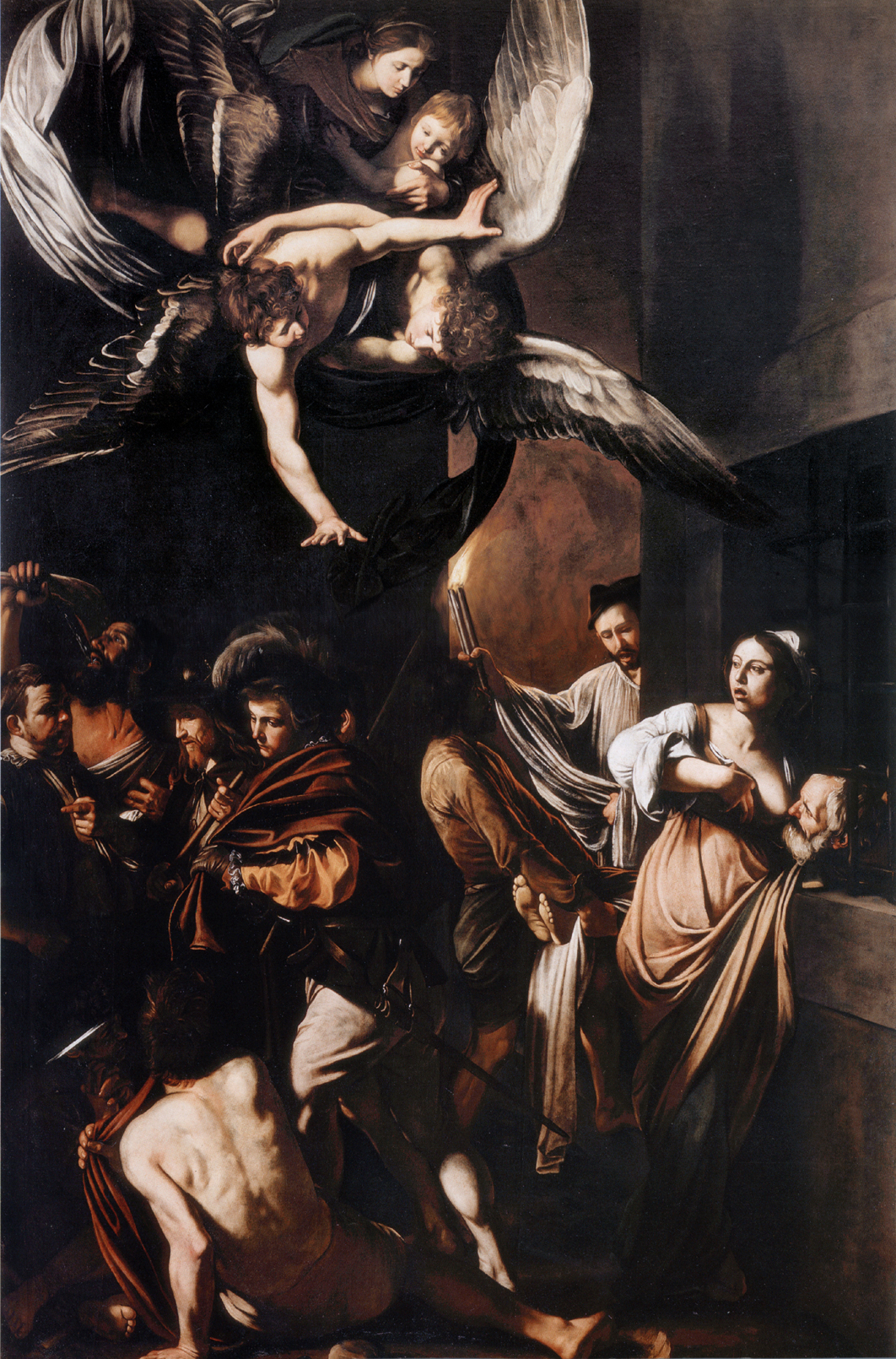
Salvator Rosa, Human Frailty (1656)
Italian Baroque painter Salvador Rosa lost one of his sons to the 1656 plague. In this poetic painting, displaying the touching use of light Rosa was known for, he tries to reconcile with the inevitability of death. Death is in fact shown as a skeleton, signing an agreement with a newborn baby who will inevitably pass away one day. The message is captured by the title: humans must remember their fragility and never take a new day for granted.
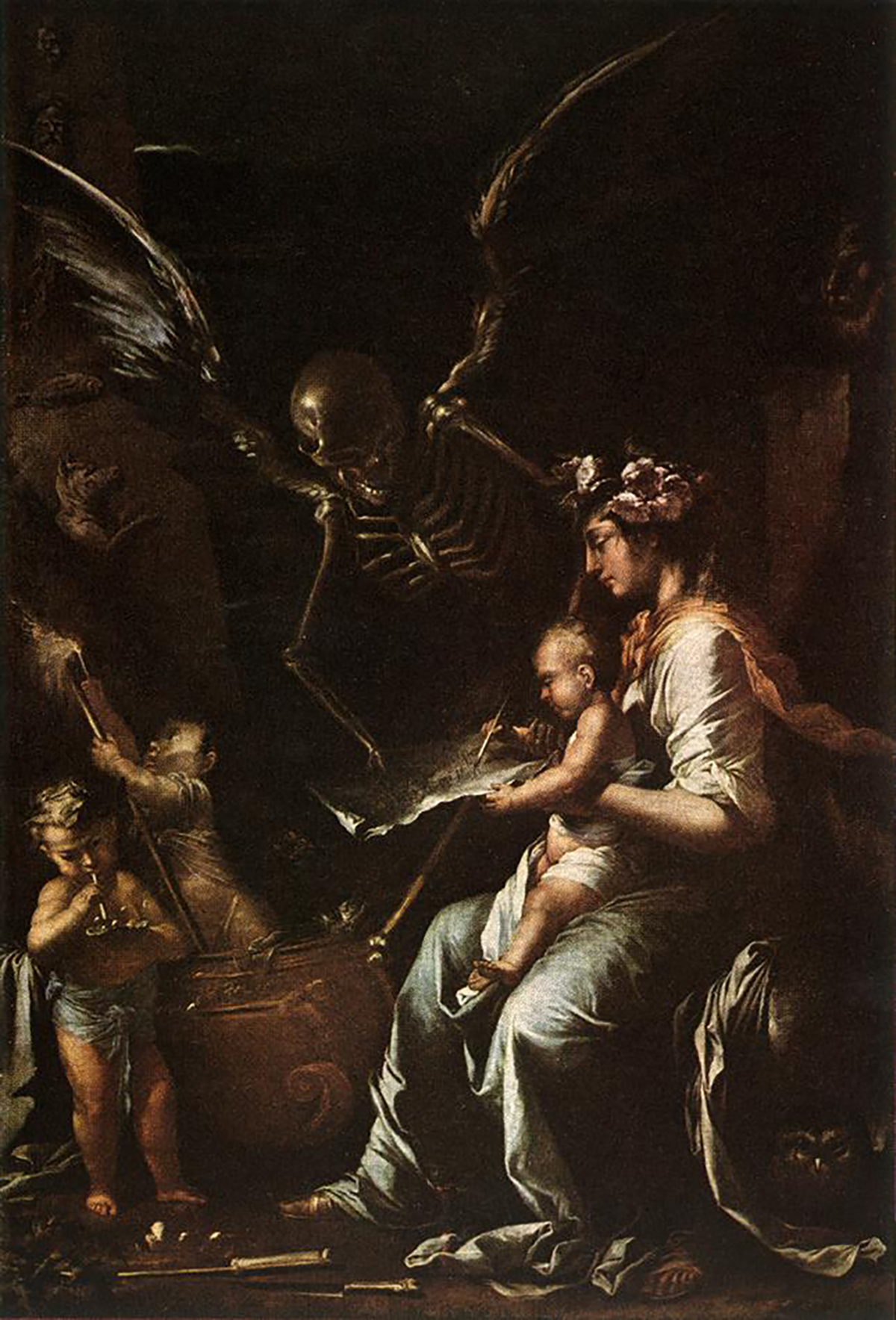
Titian, Pietà (1575-1576)
Titian famously died in the 1576 Venice plague and painted this picture just a few months before passing away. The painter depicts himself as a half-naked figure, praying to Mary who is cradling the body of Christ according to the iconography of the Pietà. A small picture at the base of the right hand statue depicts two men, Titian and his son Orazio, praying to a Pietà in the sky. Titian wanted this moving portrait of faith to be his last sign of devotion. The painting was left unfinished and completed by Palma the Young after Titian’s death.
